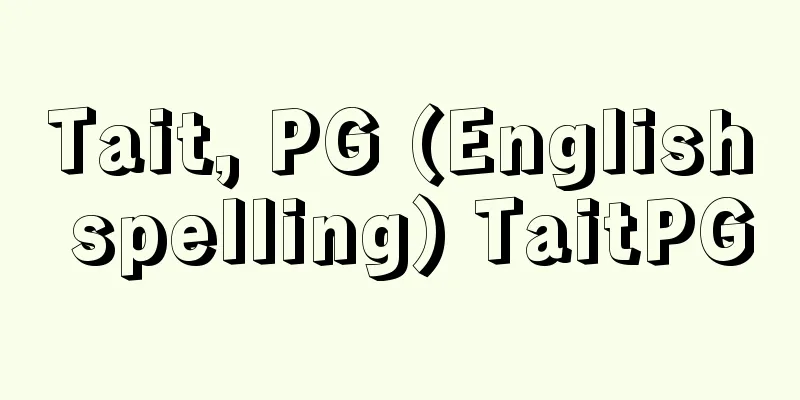penny paper

|
…(1) A popular paper in New York, USA. It was first published by Benjamin Day on the morning of September 3, 1833. It was marketed as a penny paper, costing only 1 cent, in contrast to the previous quality papers, which cost 4-6 cents. Its content focused on crime, gossip and other social topics, and it was well received by the public as a “cheap and interesting” paper, different from the politically-focused newspapers of the time. It became the prototype of early popular newspapers. However, conservatives attacked the paper’s sensationalism, and in 1837 Day sold it to Moses Y. Beach for $40,000. … From the editorial:...In the early days of newspapers in both Europe and the United States and in Japan, reporting and editorials were undifferentiated, and the main task of newspapers was to spread opinions as well as to report, and at the same time, the history of editorials was closely linked to the history of obtaining freedom of speech. In the latter half of the 19th century in Britain and America, a series of low-cost popular newspapers called penny papers appeared. These newspapers tried to make up for the reduction in their prices by increasing advertising revenues, and so, due to concerns about advertisers, the emphasis was placed on reporting rather than on the company's opinions. ... From the newspaper:...The first to appear was The Sun, founded by Benjamin Day in New York in 1833, followed by The New York Herald (1835) and The New York Tribune (1841), cheap, one-penny newspapers aimed at the masses. These were called penny papers, and cost just one cent, so they attracted a large audience who had previously been unable to afford newspapers that cost six cents. In Britain, The Daily Telegraph was founded in 1855, when the Stamp Duty Act was abolished, and the Daily Mail was founded in 1896, both of which grew to huge circulations. From [Mass Communication]...It is the social establishment of a consciousness typically seen among Puritans, who wanted to experience things directly and to place themselves on a map beyond the everyday world that is satisfied by ordinary verbal communication, and to recognize meaning within those connections (for details, see the entry on "Mass Communication" in the "England" entry). (2) The Establishment and Development of Mass Communication The movement to expand the readership of print media to the lower classes of society was attempted in the radical movement after the Industrial Revolution, and in America, where there were almost no restrictions on control at the corporate level, the "penny paper" achieved some success in the 1830s. However, it was not until the 1990s that newspapers began to utilize the latest technological means and emerge as large corporations with huge capital capable of mass production. ... *Some terminology explanations that mention "penny paper" are listed below. Source | Heibonsha World Encyclopedia 2nd Edition | Information |
|
…(1)アメリカ,ニューヨークの大衆紙。1833年9月3日朝,デイBenjamin Dayによって創刊された。従来の4~6セントもする高級紙(クオリティ・ペーパー)に対して,わずか1セントの廉価大衆紙(ペニー・ペーパー)として売り出され,内容も犯罪・ゴシップなどの社会記事に重点をおいて,それまでの政論偏重の新聞とは異なる〈安くておもしろい〉新聞として大衆の好評を博し,初期大衆紙の原形となった。しかし,保守派が同紙のセンセーショナリズムを攻撃したこともあって,37年デイはビーチMoses Y.Beachに同紙を4万ドルで売却した。… 【社説】より…欧米でも日本でも,新聞の創始期には報道と論説は未分化であって,新聞は報道とともに主張を広めることもその主要な任務としたのであり,同時に社説の歴史は言論の自由獲得の歴史と密接に結びついていた。 イギリス,アメリカでは19世紀後半にペニー・ペーパーpenny paperと呼ばれる廉価大衆新聞が続出した。これらの新聞は,定価の引下げを広告収入の増加で穴埋めをはかったので,広告主への気がねなどから社の主張よりも報道が重視されるようになった。… 【新聞】より…その先頭を切ったのは1833年ニューヨークでデイBenjamin Dayが創刊した《サンThe Sun》であり,続いて《ニューヨーク・ヘラルドThe New York Herald》(1835),《ニューヨーク・トリビューンThe New York Tribune》(1841)など,大衆を対象とする1ペニーの安価な報道新聞が登場した。これらは〈ペニー・ペーパーpenny paper〉と呼ばれ,わずか1セントなので,これまで6セントもした新聞に手を出せなかった大衆を読者として開拓したのである。イギリスでは印紙税法廃止の55年に《デーリー・テレグラフThe Daily Telegraph》が創刊され,さらに《デーリー・メールDaily Mail》(1896)が創刊されて,いずれも巨大な部数に伸びた。… 【マス・コミュニケーション】より…直接体験ができ,ふつうの口頭コミュニケーションで充足する〈日常世界〉を超えた状況,地図のなかに自分を位置づけ,その連関のなかで意味を認識したい,というピューリタンに典型的にあらわれる意識の社会的定着である(詳しくは,〈イギリス〉項目の[マス・コミュニケーション]の項参照)。(2)マス・コミュニケーションの成立と発展 活字メディアの読者層を社会下層に拡大しようという動きは,産業革命以降の急進運動のなかで試みられ,企業の次元では統制の制約がほとんどなかったアメリカにおいて1830年代〈ペニー・ペーパーpenny paper(大衆廉価新聞)〉が一定の成果をあげる。しかし,新聞社が最新の技術手段を駆使し,大量生産の可能な膨大な資本金を擁する大企業としてあらわれるのは,19世紀の90年代である。… ※「penny paper」について言及している用語解説の一部を掲載しています。 出典|株式会社平凡社世界大百科事典 第2版について | 情報 |
Recommend
Bird watching
This was a job title seen in the Edo Shogunate an...
Dry simultaneous desulfurization and denitrification method
...According to the results of applying this meth...
Pinturicchio
Italian painter. His real name was Bernardino di B...
The King's Mirror (English: Konungsskuggsjá)
A book on morality from medieval Norway. The autho...
Okinawa pheasant - Okinawa pheasant
...It is distributed in southern Kyushu, Ryukyu, ...
Secured Bonds - TANPOTSUKI SHAI
A bond with a security attached to it. It is the ...
Cavolinidae
…A general term for planktonic shellfish belongin...
neighbouring rights
...The rights granted to performers, phonogram pr...
Bedford Level
...However, monasteries were established in the s...
Wetland Agriculture
Agriculture carried out in hot, humid regions wher...
Spanish War of Independence
The war between 1808 and 1814, in which the Spani...
Izumisano [city] - Izumisano
A city in the southern part of Osaka Prefecture. I...
Fruit (plant) - kajitsu
The pistil of an angiosperm flower develops after...
Rose window - rose window
A wheel window is a large circular window usually ...
Kumaishi [town] - Kumaishi
A former town in Nishi-gun, Hokkaido. Facing the S...









